Jumping off Wallace Stevens’s classic poem, “13 Ways of Looking at a Blackbird,” 13 Ways of Looking asks authors to show the visual inspirations for their latest projects, with accompanying background on how these images directly or indirectly influenced their book. Second in the series is Joseph Osmundson, author of Virology: Essays for the Living, the Dead, and the Small Things in Between.
–Rob Spillman
*
The biggest relief for my editor in the process of putting together my new collection, Virology: Essays for the Living, the Dead, and the Small Things in Between, is when I told them that, no, even though this is (in part) a science book, I do not want to include figures.
I wanted to write a book that was popular science, but more and different than that. Viruses, in this moment, are so complicated that science writing alone fails entirely to capture their meaning. Because I wanted my book to include memoir, queer theory, literary analysis, and archival information, I wanted it to exist entirely as a world of words. I tried to conjure images, yes, but from black letters on white pages only.
So the opportunity to re-insert images into the work, beyond the bound book itself, is one I cherish. Here, the image is central, it’s the point. These images provide different ways of looking at a virus, from scientific images and figures to art and personal polaroids. This visual essay looks at viruses alongside the words-only world of the book, a supplement, orthogonal to it. I tried to do this in other ways as well; my book has an accompanying website, www.virologybook.com, with a living notes section (including some but not most of these images), an archive of the book, and an oral history project. These additional projects are trying to extend beyond the possible for a printed book, into voice, and living documents, and radical openness, and—here—image, too.
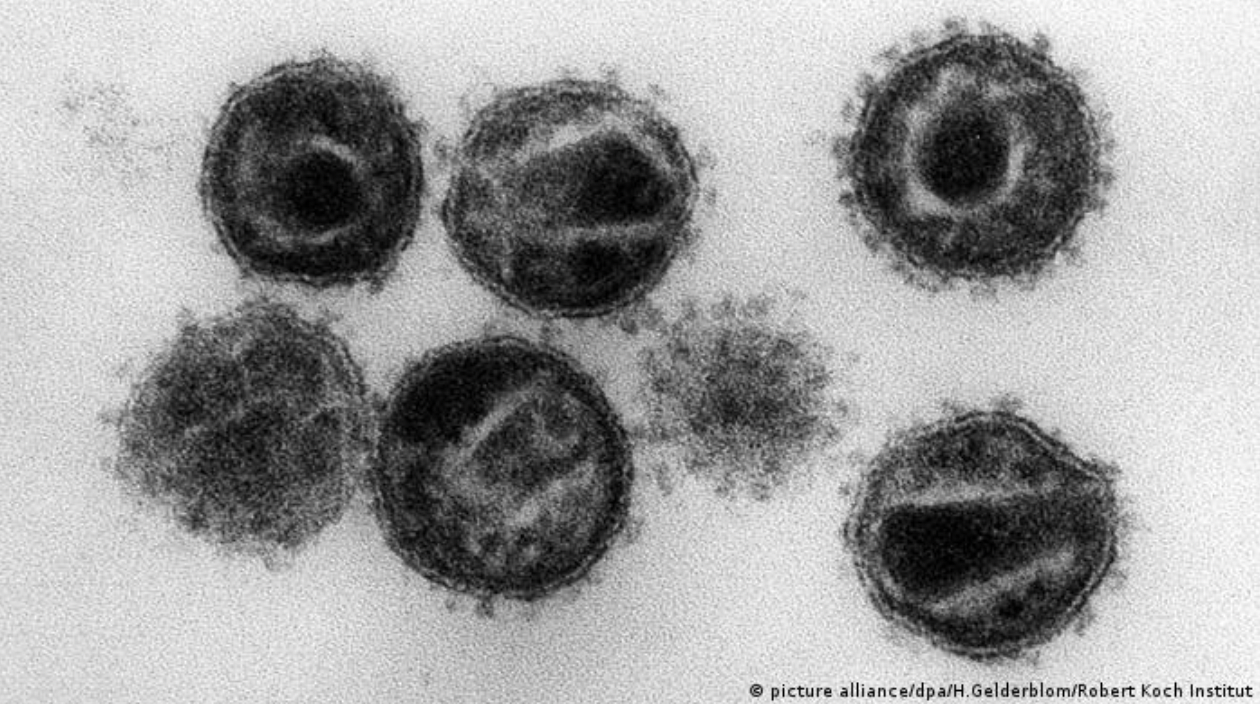
1.
This is an electron micrograph of HIV. Viruses, in general, are too small to be seen by typical microscopes that use light to illuminate biological structures. Our cells are big enough, and even bacterial cells, too, but viruses are almost always much much smaller than that. Electron microscopes use electrons to “illuminate” samples, and here the virus becomes visible at last. In these images, the round circles on the outside of the virus are its fatty membrane. In the case of HIV and SARS-CoV-2 (the virus that causes COVID-19), this membrane is taken from our own cells as it “buds” from them to leave. The regular, long shape inside is the virus’ protein capsid, the shell that holds its genetic material. And, inside there, just a dark mass in this image, is the viral RNA, its genetic material, everything needed to make more copies of itself, which is the only thing that any virus wants to or is capable of doing.
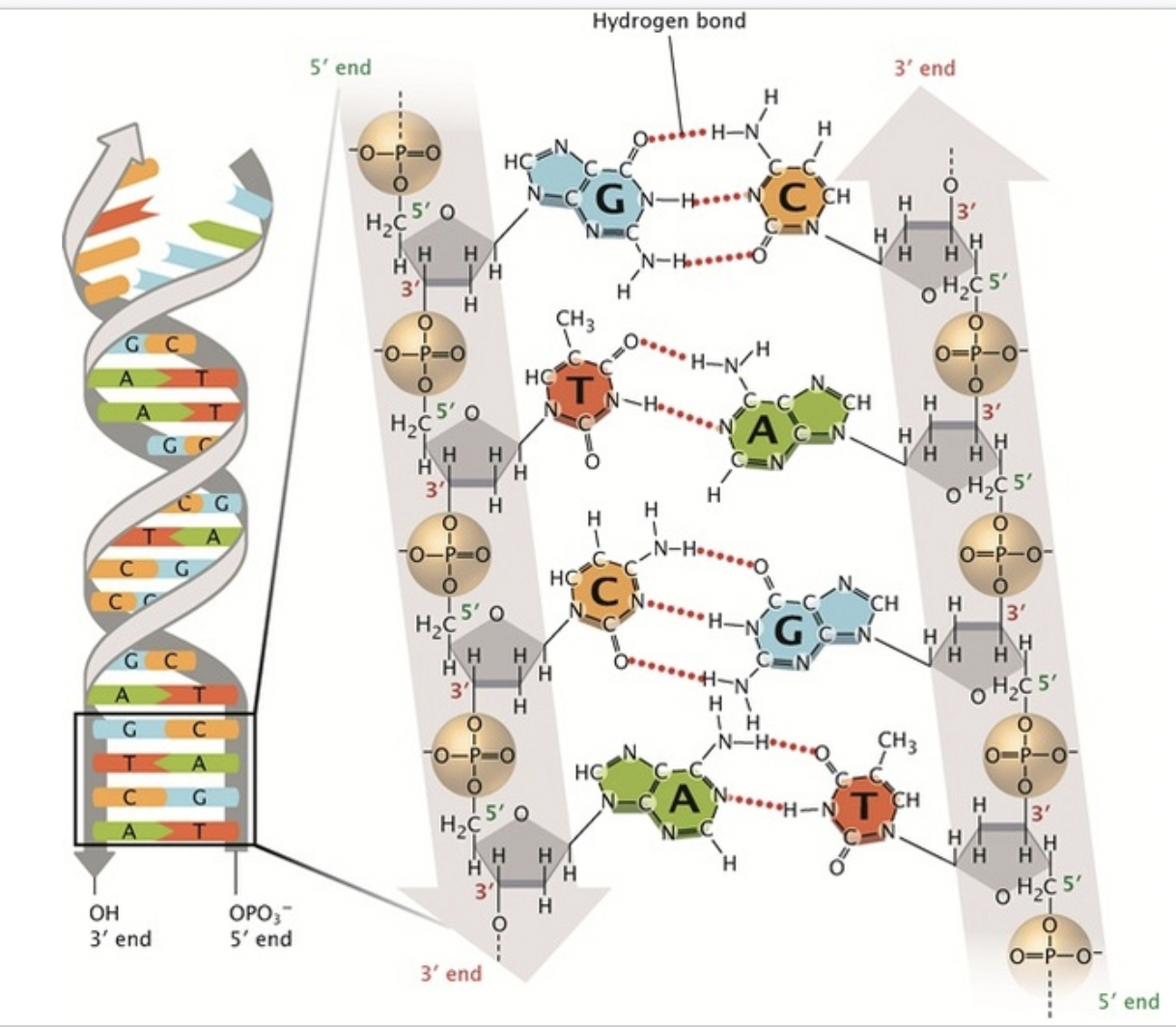
2.
The genetic material in our cells, and all the cells of all living things, is made from this molecule, from DNA. DNA is a famous double helix; its information is encoded by the four different bases it can have in the center of the helix. The gray “backbone” around the outside simply repeats—and does so for millions and millions of “bases” per human chromosome, 23 in total, making up 3.2 billion unique bases per single human cell. I know! DNA in our cells is stable and doesn’t do chemistry; proteins are needed for that. But the DNA in our genes can spell out the messages needed to make proteins; this is how DNA carries information to begin with.
The molecular biology of viruses dictates so much about them: will they kill us or go unnoticed? Will they be with us for a week or a lifetime? Viruses break all the rules of life. For example: viruses like HIV and SARS-CoV-2 both encode their genes not in DNA, but in its less stable (not double helical) cousin RNA, which breaks down over time. HIV turns its (unstable) RNA into permanent DNA, and therefore lives in us for life. COVID-19 never turns itself into DNA; when we get infected, the virus comes. When we are well again, the virus leaves us, too.

3.
This is just another way of “visualizing” HIV. Instead of the electron micrograph above, here we’ve taken the RNA genome of HIV and stretched it from one end to another. Unlike humans, who have 3.2 billion bases or “letters” of information, HIV has fewer than 10,000. Unlike humans who have 20,000 genes, HIV has nine. And yet, HIV, with its tiny genome, can kill us deader than a virus.
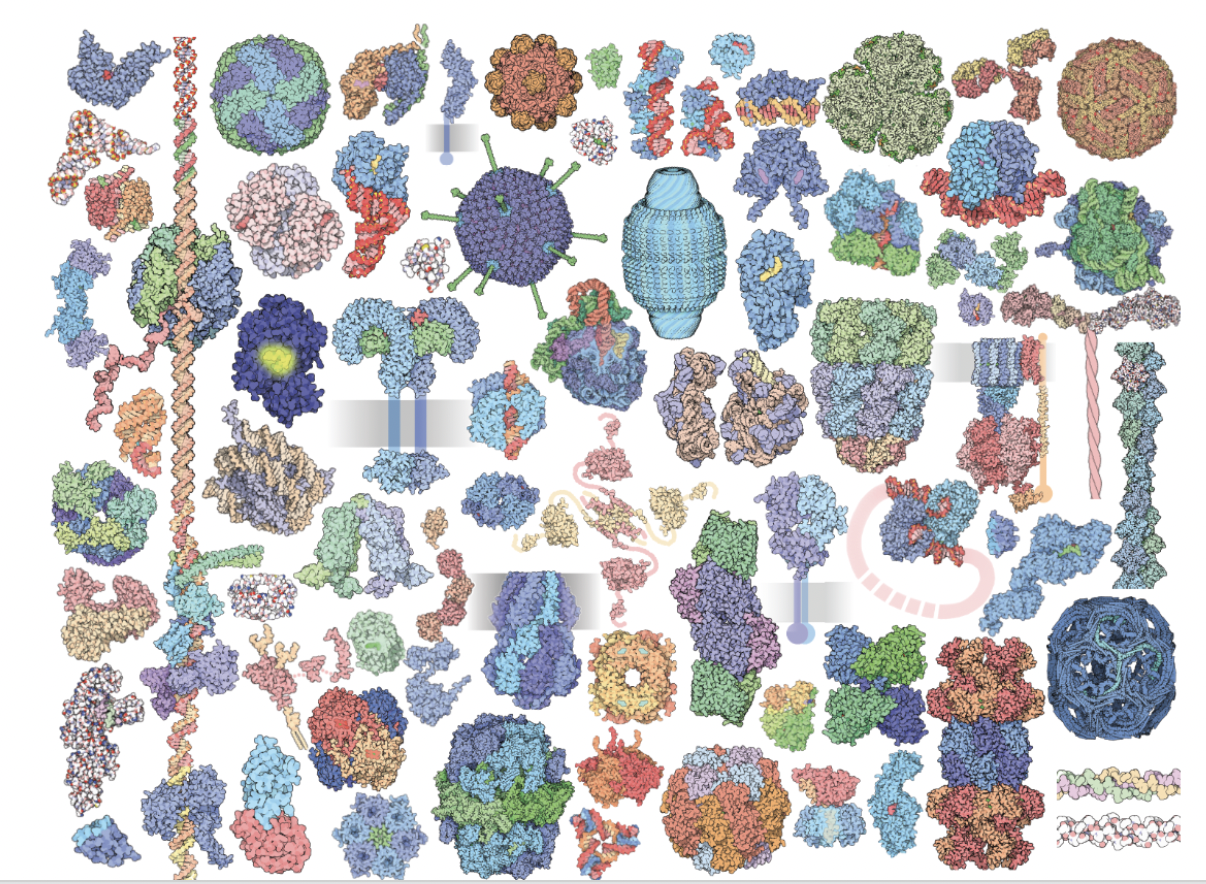
4.
While DNA has a uniform shape (the double helix!), proteins can fold up into just about any shape. The shape a protein has is dictated by the sequence of its residues, amino acids, their charge and size and shape. The sequence of a protein’s amino acids is dictated only by the DNA or RNA that encodes it. So information in biology flows from DNA (where it’s stored) to RNA (where cells activate that info) to proteins (which finally get to have a unique shape, the snowflakes!). RNA viruses like SARS-CoV-2 skip the DNA storage all together and use only RNA to store and activate their genes.

5.
Speaking of ways of looking, here’s another version of the same image we saw first. This is a high resolution structure of the HIV capsid, just that dark black portion of the virus in the first image. It’s made from repeating units of one small protein that pack and pack and pack together into sort of an oblong soccerball-like shape, holding the virus together. It’s simple: just one protein, one shape, again and again and again. It’s horrifyingly complicated: this shape, this capside, in HIV, is needed to replicate, and—by replicating, if we don’t have access to medicines to stop it—it can kill our T-cells, and so our whole body.
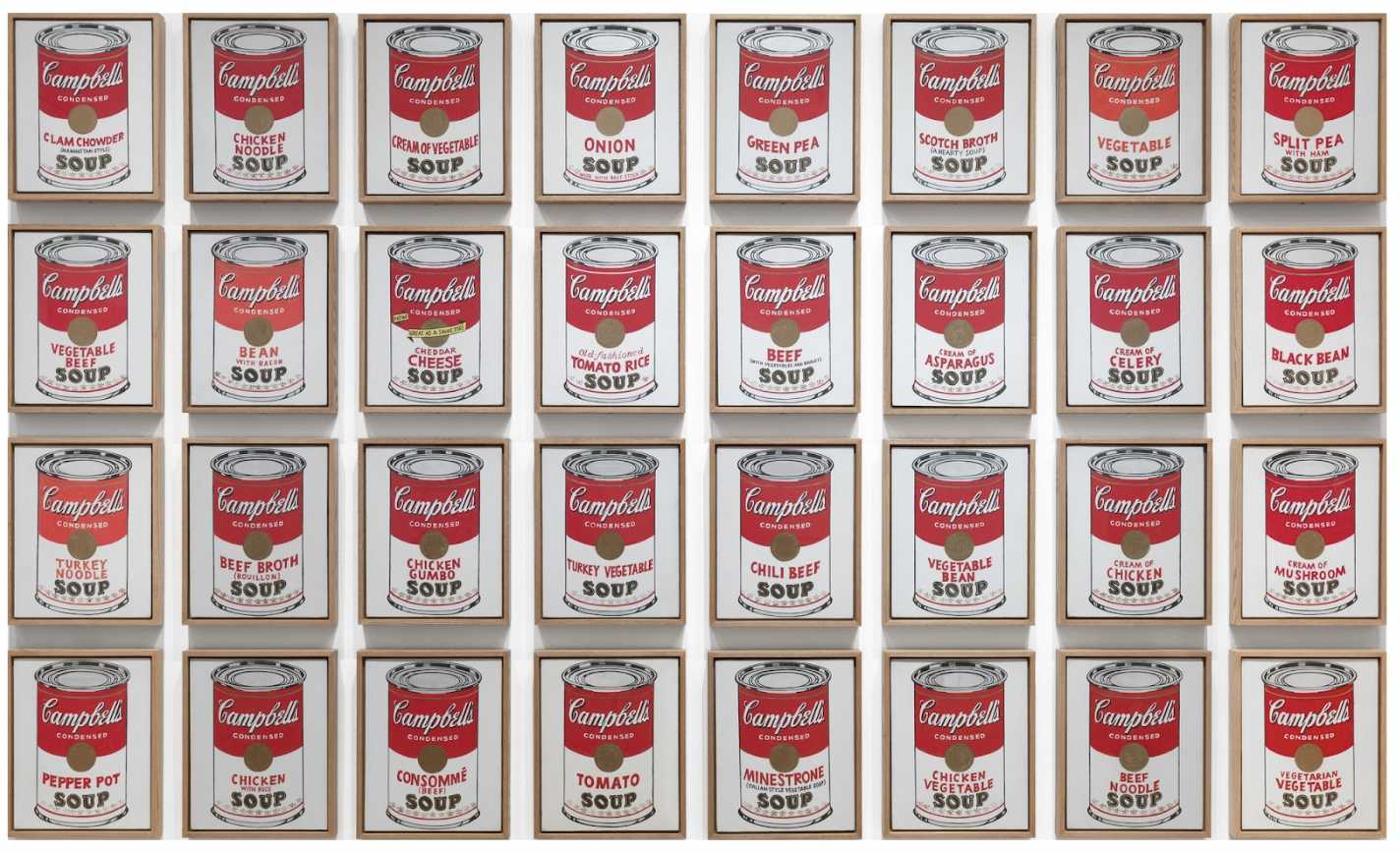
6.
Visually, the capsid structure always reminds me of pop art that uses repeating images to overwhelm, to restructure, to build new meaning from simple parts. Pop art, like this Warhol, uses images so commonplace as to be mundane, images that were never considered serious enough to be considered art. The units themselves build something more, larger. They make us question what’s valuable, and who has access. I can go buy any of these types of soup, but I could save all my pennies for all my years and not have enough to purchase a square inch of this canvas.
Viruses, like pop art, fray and reframe our common meanings; viruses are biological entities—not living or dead—made by common proteins, mass produced. Like pop art, they show us what we value, but mostly whom. They beg questions: why are certain people more at risk for HIV and COVID-19? Viral protein production overwhelms our body, like this image overwhelms our eye.
And yet this is not the only way.
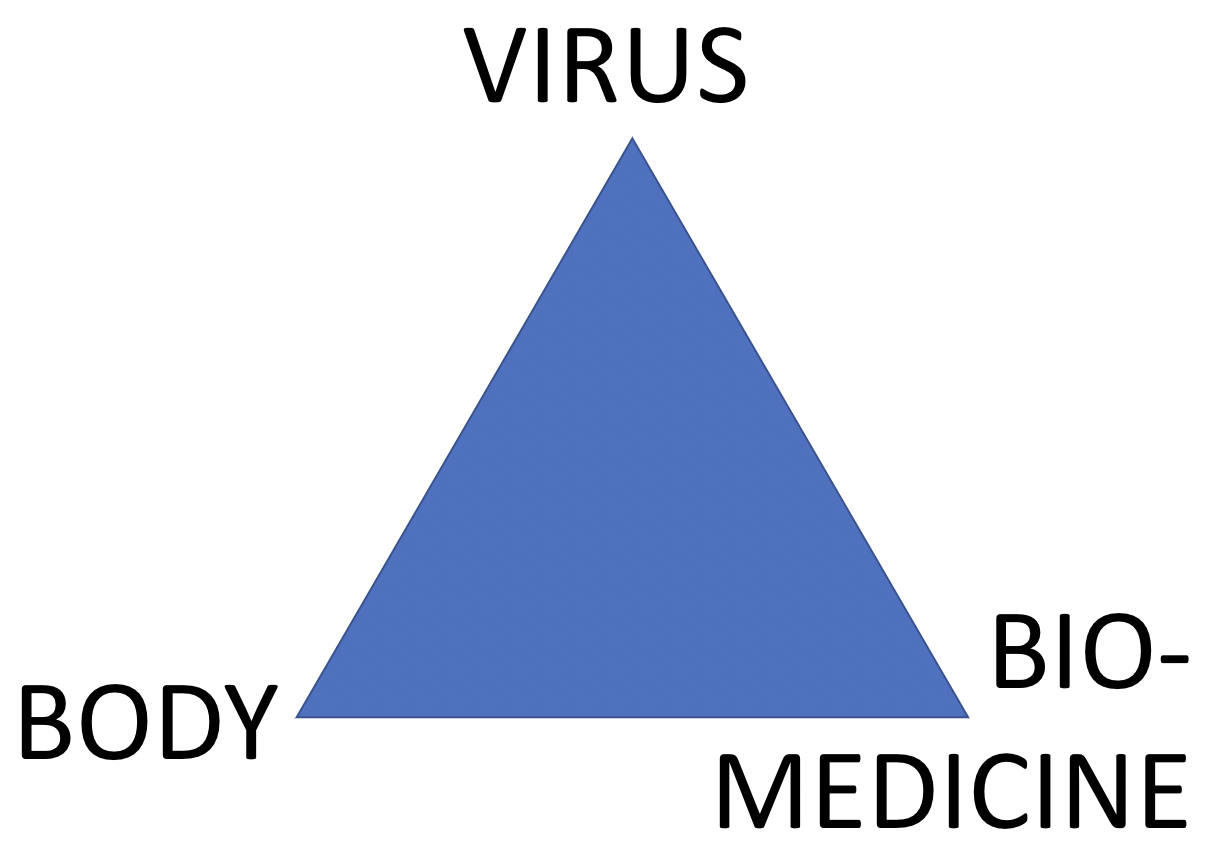
7.
Humans are remarkable beings; we can invent new ways to care for one another. Viruses interact with our bodies. Most viruses will not be able to infect us. Most viruses that can infect us may not even make us ill. Most viruses that make us ill certainly won’t kill us—what good would that do the virus, it needs us to replicate itself? For the rare virus that does us harm, we can build behaviors—like masking and social distancing—and medicines and vaccines to intervene.
Social epidemiologists imagine this as a triangle (or square) with the virus, our body, and medicine (and, in the square, the environment) all being factors in whether or not we get an infection and what the outcome of that infection will be.
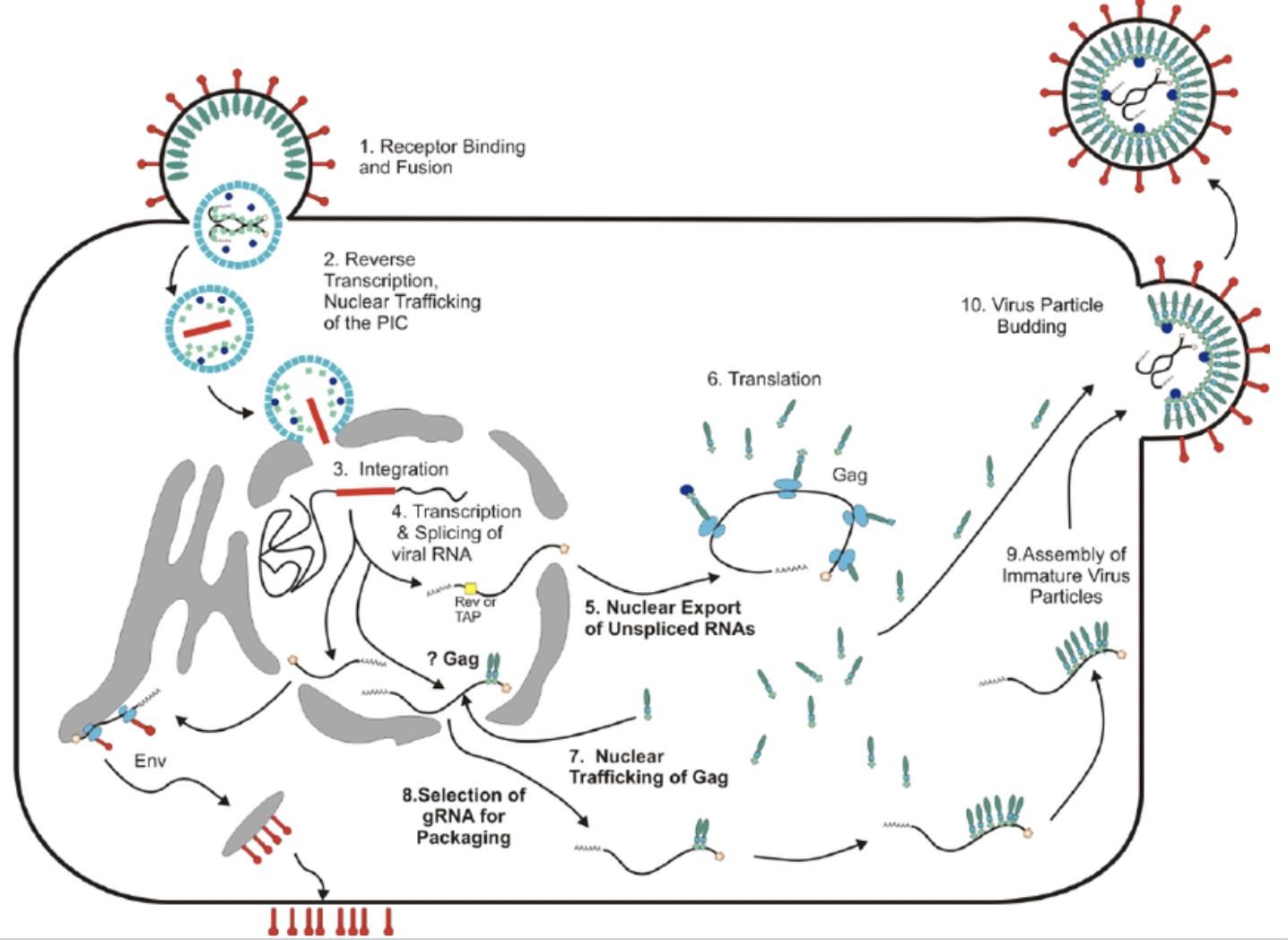
8.
For example, this is the HIV replication cycle. The virus will enter our cells by binding to CD4 and CCR5. These proteins exist only on our T-cells; this is why the virus targets these cells, so essential to our immune system. Once inside, the virus inserts itself into our DNA, literally becoming a part of us. From there it can copy its genes, make more virus, and leave. But each of these essential steps is an opportunity to intervene, and since 1996, we’ve had the tools to do so. Drugs. Drugs that block the viral reverse transcriptase, so it can’t copy its RNA to DNA. Drugs that block viral protease, so its proteins can’t function. Drugs that block its viral integrase, so it can’t cut itself into us.
We have good HIV drugs now both for treatment and for prevention. And who is left behind? Whose bodies aren’t deemed worthy enough of drugs? In the American context, largely black and brown and poor Americans in the rural south. Drugs can save lives. The lives we choose not to save is a mirror back, an image of who we are, and whose deaths we tolerate.
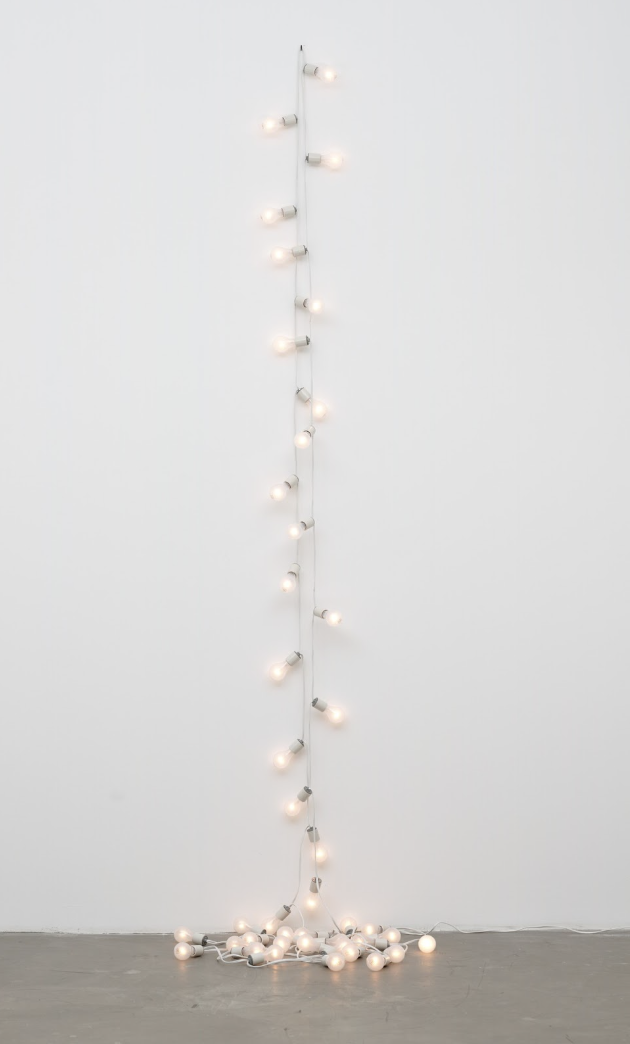
9.
Artist Felix Gonsales Torres died in 1996 of HIV. His art, and his installations in particular, are now instantly recognizable, like this string of white lights hanging down a museum wall. When a museum or gallery buys a Gonsalez-Torres to display, they don’t get the lights, they don’t get the object itself. They get instructions: here’s where you buy everything you need to build it. HIV had inserted instructions in Felix’s DNA even as he made these works: Here’s how you make me.
Gonzalez-Torres died the very year HIV became—for those with access—a largely treatable chronic illness. If he lived another six months, he might be with us now. His installations, so joyous, bright lights and colorful candies and sexy dancers, make his loss all the more painful. What joy might he have brought us, and himself and his friends and lovers, had not this virus taken him away so soon?
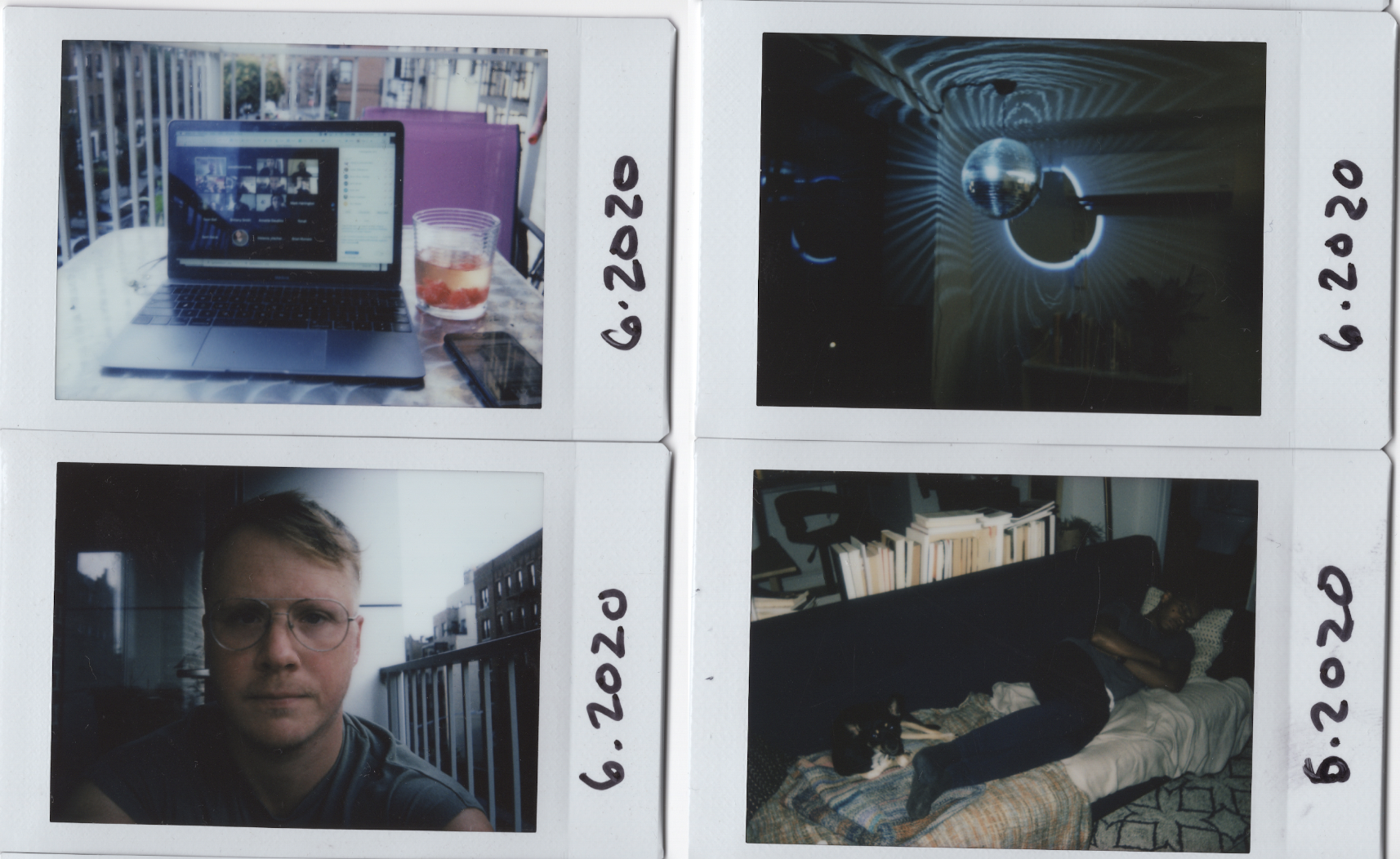
10.
When COVID hit and our lives changed, I thought about Felix (and Keith Harring and David Wojnarowicz and Peter Hujar and Carlos Almaraz and Hugh Steers and even fucking Robert Mapplethorpe, that he’d live long enough to get canceled). Come hell or high water, I wanted to leave my own mark. I wanted to collect images, in addition to words, of our life then. I bought a Fujifilm instant camera. I took pictures of everything, of zoom meetings and wine on the balcony, the air as safe as anywhere could be, of the disco ball in my living room, the only safe nightclub, of my partner and our dog napping on the couch, the afters. These images are a part of the archive of my book, and our lives, collected at www.virologybook.com/archive.

11.
Here is Felix Gonsalez-Torres again. This is a portrait of him and his partner. This is their empty bed after his partner, Ross, died of HIV in 1991. Torres purchased billboard space to display this photograph, making something doubly invisible (private loss) a part of public discourse. How many beds lie empty, now, due to our new ongoing pandemic? At least a million in America alone. My partner’s grandma. My best friend’s mom. Private, empty ruptures in their little lives that have not yet, and may never, been rendered visible enough.
This past week, my partner and I have been bedridden with COVID-19, our first time after all this time. And so this lovers’ bed can’t help but remind me of this place we’ve spent so many sick and getting-better hours. Our sheets and the light in our bedroom even look a bit like this. With COVID-19, our sickness is inherently and necessarily private: we stay away from others to prevent transmitting the illness. But I want to render public, here, how I cared for him (home-cooked soup) and how he cared for me (dialing up the tennis on the TV when I didn’t have the energy) in our private home.
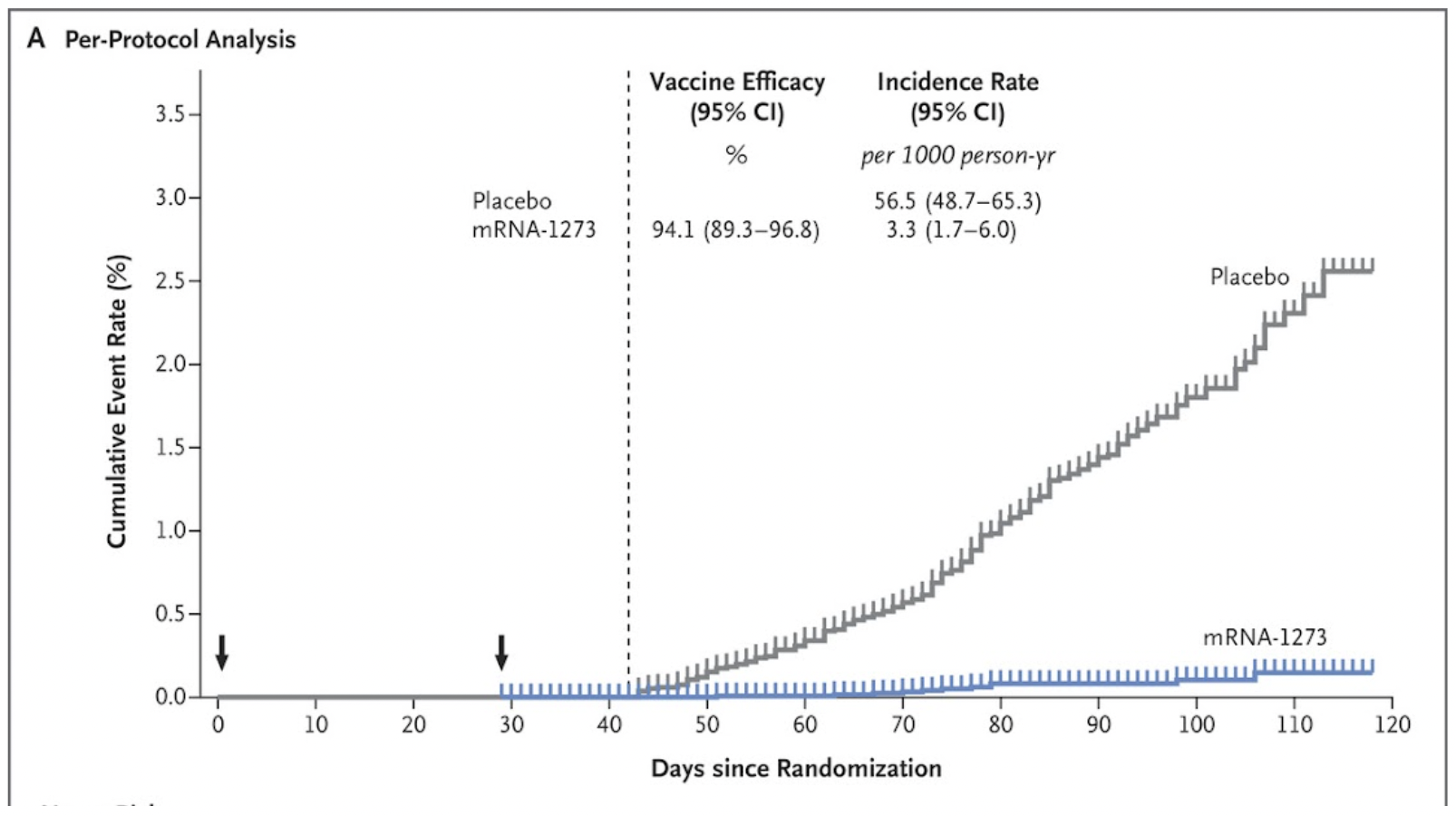
12.
Illness, including viral infections, change meaning over time. I first saw this image in November, 2020; I was so struck with emotion that I didn’t cry. I sobbed. I could not believe it. Vaccines against respiratory pathogens, like colds (caused by rhinoviruses or seasonal coronaviruses) and influenza have largely been a flop. The flu vaccine is required yearly and even then it isn’t that effective. I’m a molecular and not a clinical scientist, but when data are this clear, it’s obvious to anyone with any statistical training. We’d done the impossible: We developed a 95 percent effective vaccine against symptomatic COVID-19 infection in around nine months.
Unbelievable, magic, the corny stuff of hopeful dreams.
Everything that’s happened since then does break the magic just a touch. We could vaccinate the world, we didn’t. We could continue to care for one another with simple things, like masks and tests, but we aren’t. Our government, at every level, has left us to assess our risk on our own. This is the heartbreaking beauty of science: it can save lives, but it is never enough on its own.
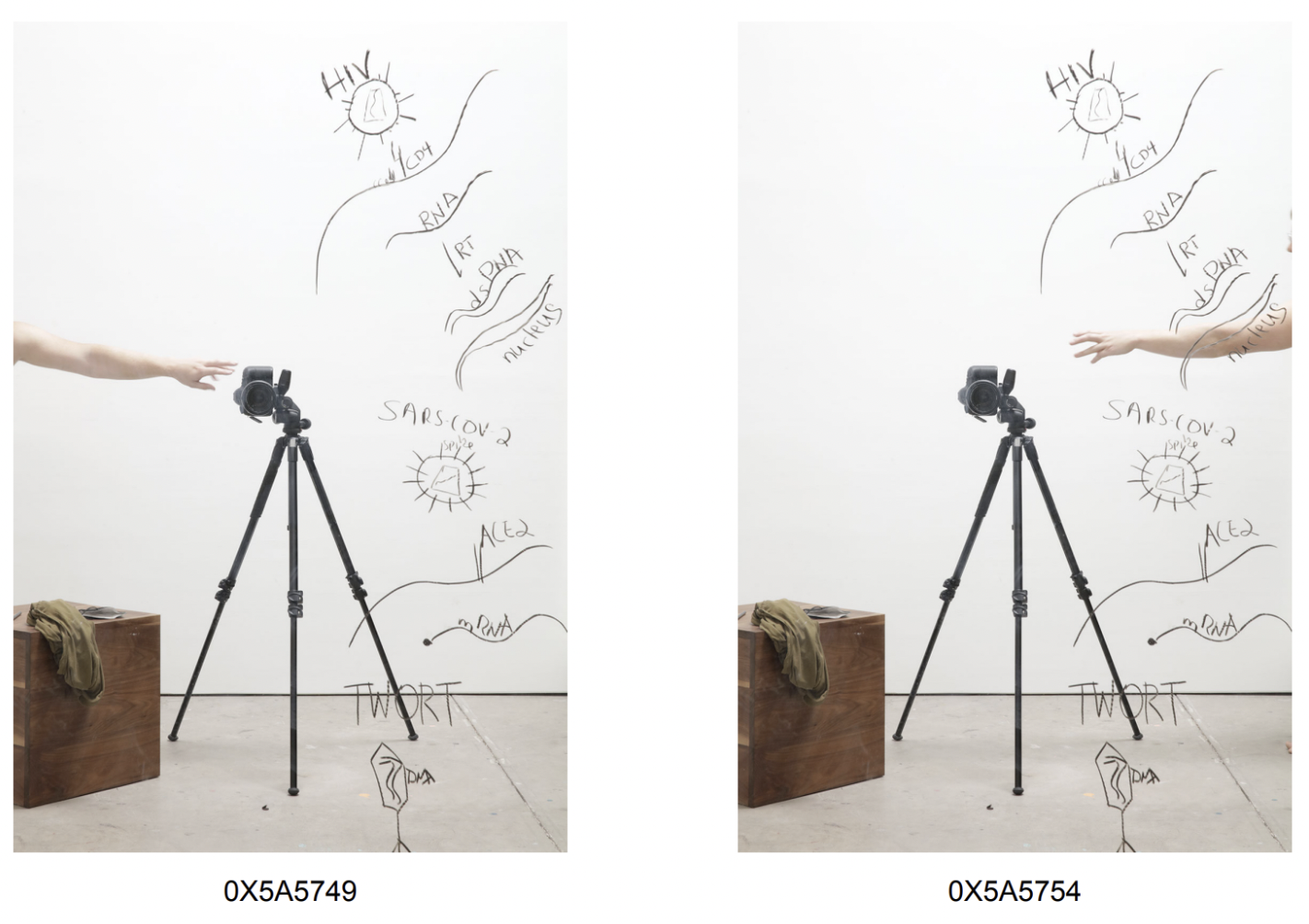
13.
I created these images with my good friend and longtime collaborator Paul Mpagi Sepuya. They’re in the dossier of images that I wanted to become the cover of Virology; in fact, I made a case for one of these images being the cover. Norton (my publisher) used it among many references, but I wanted to render them visible here not because they’re beautiful—which I think it is—but because they represent my friendship with Paul, our creative work over so many years, and the way that we’ve grown together and loved one another all along.
In the face of a world that seems committed to making every day, day after day, somewhere on a scale from exhausting to terrifying, when we face pandemics and climate change and fascism and sexism and racism and homophobia and and and, I want to pause, and end, at making art with our friends. If I want to do one thing while the world burns it is this. If there’s one thing that I think, with the right art and the right friends, can help stop the world from burning, it is this.



